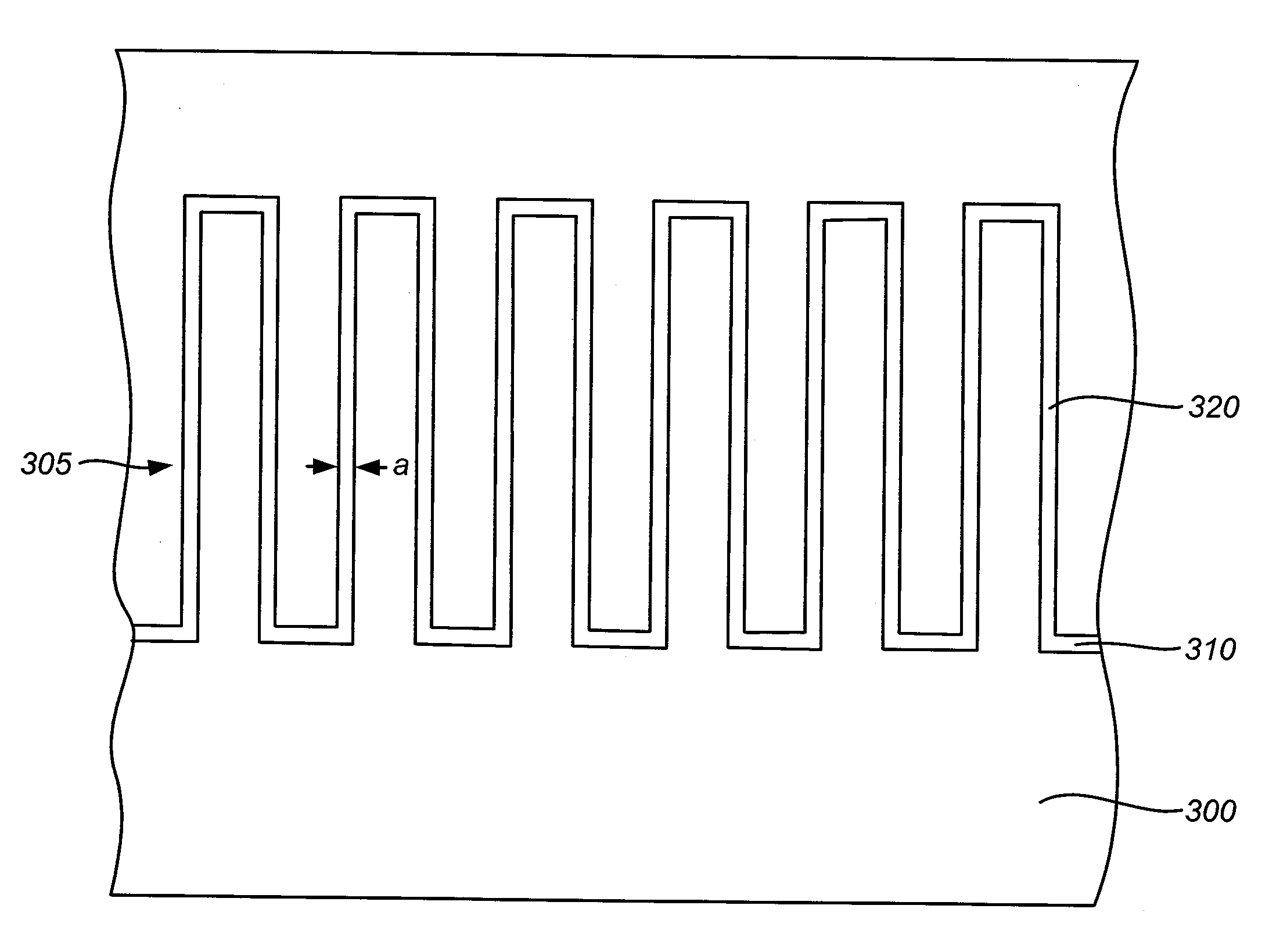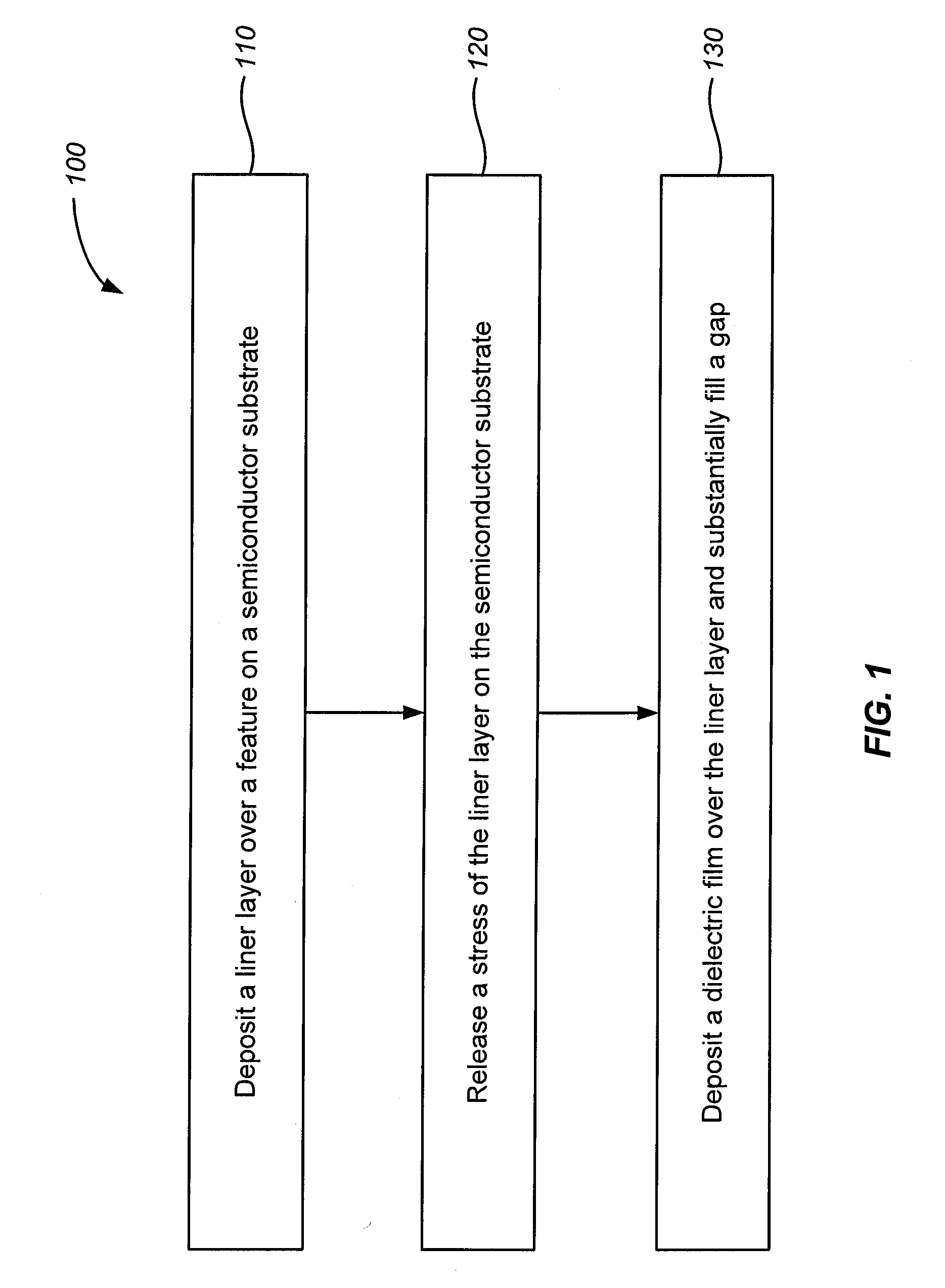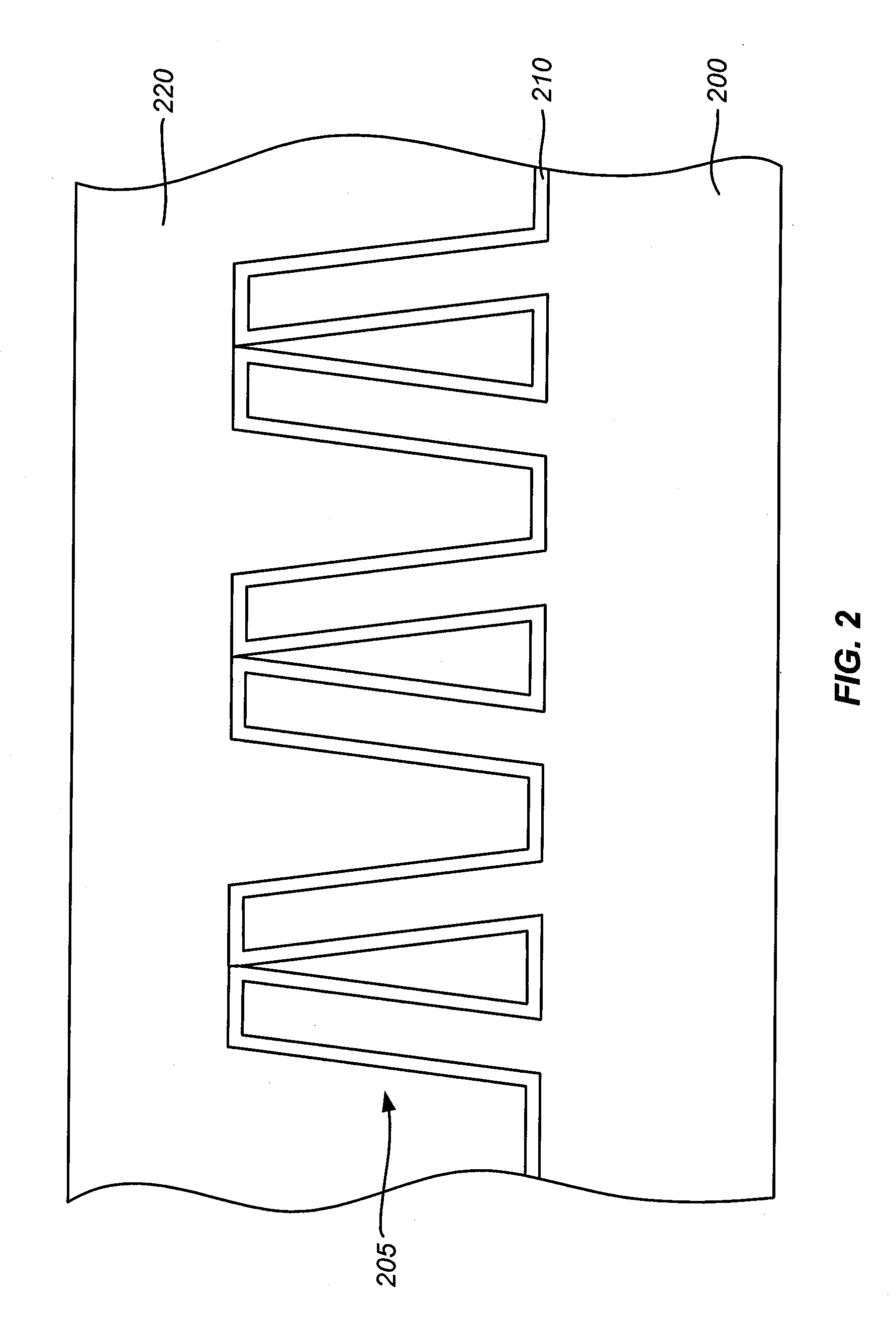Deposition methods for releasing stress buildup
a technology of stress buildup and deposition method, which is applied in the direction of semiconductor/solid-state device manufacturing, basic electric elements, electric apparatus, etc., can solve the problems of increasing the aspect ratio, progressively more difficult to fill gaps without leaving voids, and affecting the operation of the completed device, so as to reduce the bending effect of lines
- Summary
- Abstract
- Description
- Claims
- Application Information
AI Technical Summary
Benefits of technology
Problems solved by technology
Method used
Image
Examples
Embodiment Construction
[0015]The invention relates to methods for semiconductor manufacturing. More particularly, the invention relates to gapfill methods for reducing bending effect of semiconductor structures. The method may include forming a liner layer over a feature over a semiconductor structure. Prior to filling a gapfill material in gaps of the feature, the method releases a stress of the liner layer formed over the feature. The feature can include lines with a width of about 40 nm or less and / or have an aspect ratio of about 10 or more. The stress release of the liner layer can desirably reduce the bending effect of lines of the feature that may stick the lines of the feature. By reducing the bending effect of the lines, the gapfill material can be desirably filled within gaps of the feature.
[0016]FIG. 1 is a flowchart illustrating a deposition method according to an embodiment of the invention. In FIG. 1, method 100 includes step 110 for depositing a liner layer over a feature on a semiconductor...
PUM
 Login to View More
Login to View More Abstract
Description
Claims
Application Information
 Login to View More
Login to View More - R&D
- Intellectual Property
- Life Sciences
- Materials
- Tech Scout
- Unparalleled Data Quality
- Higher Quality Content
- 60% Fewer Hallucinations
Browse by: Latest US Patents, China's latest patents, Technical Efficacy Thesaurus, Application Domain, Technology Topic, Popular Technical Reports.
© 2025 PatSnap. All rights reserved.Legal|Privacy policy|Modern Slavery Act Transparency Statement|Sitemap|About US| Contact US: help@patsnap.com



